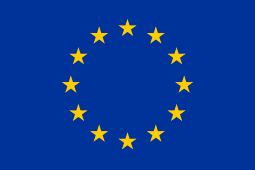Crypto, European regulation

Disclaimer
I am not a professional advisor and therefore accept no responsibility for any damage suffered by following advice or following information in this blog.
The information in this blog is for informational and educational purposes only.
The trading of Bitcoins, alternative cryptocurrencies has potential rewards, and it also has potential risks involved. Trading may not be suitable for all people. There is no bank guarantee. You can lose your investment. Don't use money you can't afford to lose.
Always do your own research first and seek professional advice if you need it.
You understand that you are using any and all Information available on or through this blog at your own risk.
July 3, 2022 | Crypto, European regulation.
For the first time, the EU has established a regulatory framework for crypto assets, crypto asset issuers, and crypto asset service providers.
The markets in crypto-assets (MiCA) proposal, which covers issuers of unbacked crypto-assets and so-called "stablecoins," as well as trading platforms and wallets where crypto-assets are stored, has been reached a provisional agreement between the Council presidency and the European Parliament.
This regulatory framework will safeguard investors, maintain financial stability, and stimulate innovation while enhancing the appeal of the crypto-asset market. Since several EU members currently have national laws governing crypto-assets, but there hasn't been a clear regulatory framework at the EU level up until now, this will increase clarity inside the EU.
MiCA will help consumers avoid fraudulent schemes and defend them against some of the hazards connected with investing in crypto-assets. Currently, consumers' rights to protection and remedy are quite limited, particularly when purchases are made outside of the EU.
With the new regulations, crypto-asset service providers will be held accountable if they misplace an investor's crypto assets and be subject to strict measures to safeguard clients' wallets. In particular, market manipulation and insider trading are two examples of the types of market abuse that the MiCA will address.
Crypto-asset market participants will have to provide information about their environmental and climate footprint. Draft regulatory technical standards for the informational content, methodology, and presentation of the main negative environmental and climate-related impacts will be developed by the European Securities and Markets Authority (ESMA). The European Commission will have to provide a report on the effects of crypto assets on the environment and the implementation of required minimum sustainability requirements for consensus processes, including proof-of-work, within two years.
MiCA does not repeat the anti-money laundering provisions found in the recently amended transfer of funds rules agreed on on 29 June in order to prevent any conflicts with updated legislation on anti-money laundering (AML), which will now also cover crypto-assets. However, MiCA mandates that the European Banking Authority (EBA) be given the responsibility of keeping a public record of crypto-asset service providers who are not in compliance.
The implementation of enhanced checks in accordance with the EU AML framework will be required of crypto-asset service providers whose parent company is situated in nations listed on the EU list of third countries considered to be at high risk for anti-money laundering activities as well as on the EU list of non-cooperative jurisdictions for tax purposes. Additionally, shareholders and CASP management may be subject to stricter regulations, particularly with relation to localization.
Recent developments on the markets for so-called "stablecoins" have once again highlighted the risks that owners face in the lack of regulation as well as the effects it has on other crypto-assets.
MiCA will actually work to protect consumers by requiring stablecoin issuers to build a sufficient liquid reserve with a 1/1 ratio and partially in the form of deposits. The issuer will at all times and without cost make a claim available to every so-called "stablecoin" holder, and the reserve's operating regulations will guarantee a sufficient level of minimum liquidity. Additionally, the European Banking Authority (EBA) will oversee all so-called "stablecoins," with the presence of the issuer in the EU being a requirement for any issuance.
To protect European monetary sovereignty, restrictions will be placed on the creation of asset-referenced tokens (ARTs) based on non-European currencies. To ensure adequate oversight and monitoring of public offerings of asset-referenced tokens, issuers of ARTs must maintain a registered office in the EU.
The interim agreement stipulates that in order to conduct business within the EU, crypto-asset service providers (CASPs) must get a license. Authorizations must be issued by national authorities within a three-month window. National authorities will periodically communicate pertinent data to the European Securities and Markets Authority with regard to the major CASPs (ESMA).
Except in cases where they fit under pre-existing crypto-asset categories, non-fungible tokens (NFTs), or digital assets that reflect real items like works of art, music, and films, will be excluded from the scope. The European Commission will have 18 months to draft a thorough analysis and, if necessary, a targeted, reasonable, and horizontal legislative proposal to establish a framework for NFTs and handle the new market's dangers.
Before undergoing the formal adoption process, the provisional agreement must have the European Parliament's and Council's approval.
Sources:
- European Council press release june 30, 2022.
What do you think, good or bad news? 😶